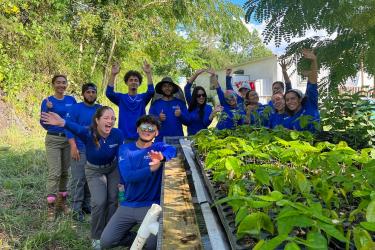Why is NOAA Fisheries Service prohibiting fishing in certain areas?
NOAA Fisheries Service is prohibiting fishing as a precautionary measure to ensure public safety and assure consumer confidence in Gulf of Mexico seafood. NOAA Fisheries Service strongly advises fishermen not to fish in areas where oil or oil sheens (very thin layers of floating oil) are present, even if those areas are not currently closed to fishing.
A process to expedite modifications to the fishing closed area in the Gulf of Mexico has been established so that boundaries of the fishing closed area can be modified daily if needed. Where is the fishery closure located?
A map with the coordinates of the closed area and other materials can be viewed on the Southeast Regional Office BP Oil Spill web page.
The coordinates can be heard on NOAA Weather Radio or by calling 1-800-627-NOAA (1- 800-627-6622; messages in Spanish and Vietnamese).
Read more for a list of dates of the closure modifications and the areas covered.
How are changes to the closed area boundary communicated to the public?
Any changes to the closed area boundary take are posted to the Southeast Office BP Oil Spill web page and are effect at 6 p.m. Eastern Time, to provide fishermen adequate time to respond to the notification and plan the next day’s activities.
Changes are communicated to the public via fishery bulletins, NOAA Weather Radio, and by posting new maps and explanatory materials to the Southeast Regional Office web page.
You can follow Twitter when the closed area changes by visiting the Southeast Regional Office BP Oil Spill web page.
What criteria did NOAA use to close fishing areas?
A combination of computer modeling and daily overflights. Sophisticated computer models produced trajectory maps of where the oil was likely to be in 24, 48 and 72-hour time frames based upon weather, satellite imagery, ocean buoy data, and ocean currents.
This trajectory was truth-tested by overflights to verify the actual extent of the oil. Managers reviewed data each morning and posted a decision regarding whether to change the closed area boundary or maintain the current boundary by 12 p.m. Eastern Time each day.
What are the criteria for re-opening closed areas?
An area is considered for reopening when there is no longer a risk of seafood contamination or adulteration.
NOAA Fisheries Service opened areas that were closed based on the oil spill trajectory if cumulative mapping showed no oil was ever in the area.
NOAA Fisheries Service has and will open an area previously exposed to oil if it is free of oil and the fish products tested meet FDA standards for public health and wholesomeness. This assessment includes further sampling followed by sensory and chemical analysis to detect the presence of oil in samples.
How does NOAA Fisheries Service conduct analysis of seafood?
NOAA Fisheries Service has developed screening methods to quickly assess contaminant loads in water and in seafood; e.g. shrimp, crabs, finfish.
Sensory Analysis: Federal and state sensory testing analysts have been trained for months to detect certain thresholds of chemicals that are not normal to fish background odors.
Each fish sample is tested by trained expert assessors who conduct a blind nose sensory evaluation of the raw odor of the fish. If the fish passes the sensory smell test, the analysts cook it and sensory smell test again.
If the sample passes that test, the analysts will taste the sample to ensure no contamination.
Chemical Analysis: The standards applied for oil are based on current standards developed by the FDA. NOAA Fisheries Service is developing new tests for dispersants and is working with the FDA on the implementation of these new tests.
May vessels transit the closed area?
Yes. The rule prohibits fishing within the closed area. The rule does not prohibit transiting or the possession of fish within the closed area.
Is catch-and-release fishing allowed within the closed area? Why not?
No. Currently all fishing is prohibited within the federal closed area. NOAA Fisheries Service is concerned about the potential risks to fishermen, as well as law enforcement issues associated with catch-and-release fishing within the closed area.
Is diving allowed in the closed area?
Yes. The rule prohibits all fishing, including spearfishing, within the closed area, but not other activities.
NOAA Fisheries urges divers to use caution and avoid diving in areas with signs of oil. What are the restrictions on federally permitted vessels while fishing in state waters? If state waters are closed to fishing due to the oil spill, all vessels must comply with that closure.
If state waters are not closed to fishing due to the oil spill, federally permitted vessels may fish in those waters while abiding by all other applicable regulations.
What is NOAA Fisheries Service doing to account for changes in fishing effort due to the oil spill when estimating the length of 2010 recreational fishing seasons?
Beginning June 1, the Gulf of Mexico Fisheries Information Network (Gulf FIN) program provided weekly, rather than bimonthly, tracking of changes in charter boat fishing effort in the Gulf of Mexico that may be related to the recent oil spill.
This increase in data collection allows a more precise estimation of the total number of trips made by anglers on for-hire fishing vessels. Results from the sampling were used to extend the recreational fishing season for greater amberjack.
The quota was originally projected to be met in July, but is now expected to last at least until October. Results also prompted NOAA Fisheries Service to initiate rule-making to allow the Regional Administrator to re-open the recreational red snapper season.
After NOAA Fisheries Service determined only one third of the 3.4 million-pound recreational quota for red snapper was landed during the open season, the Gulf of Mexico Fishery Management Council recommended re-opening the recreational red snapper fishing season on eight consecutive weekends (Friday through Sunday) beginning October 1, 2010.

